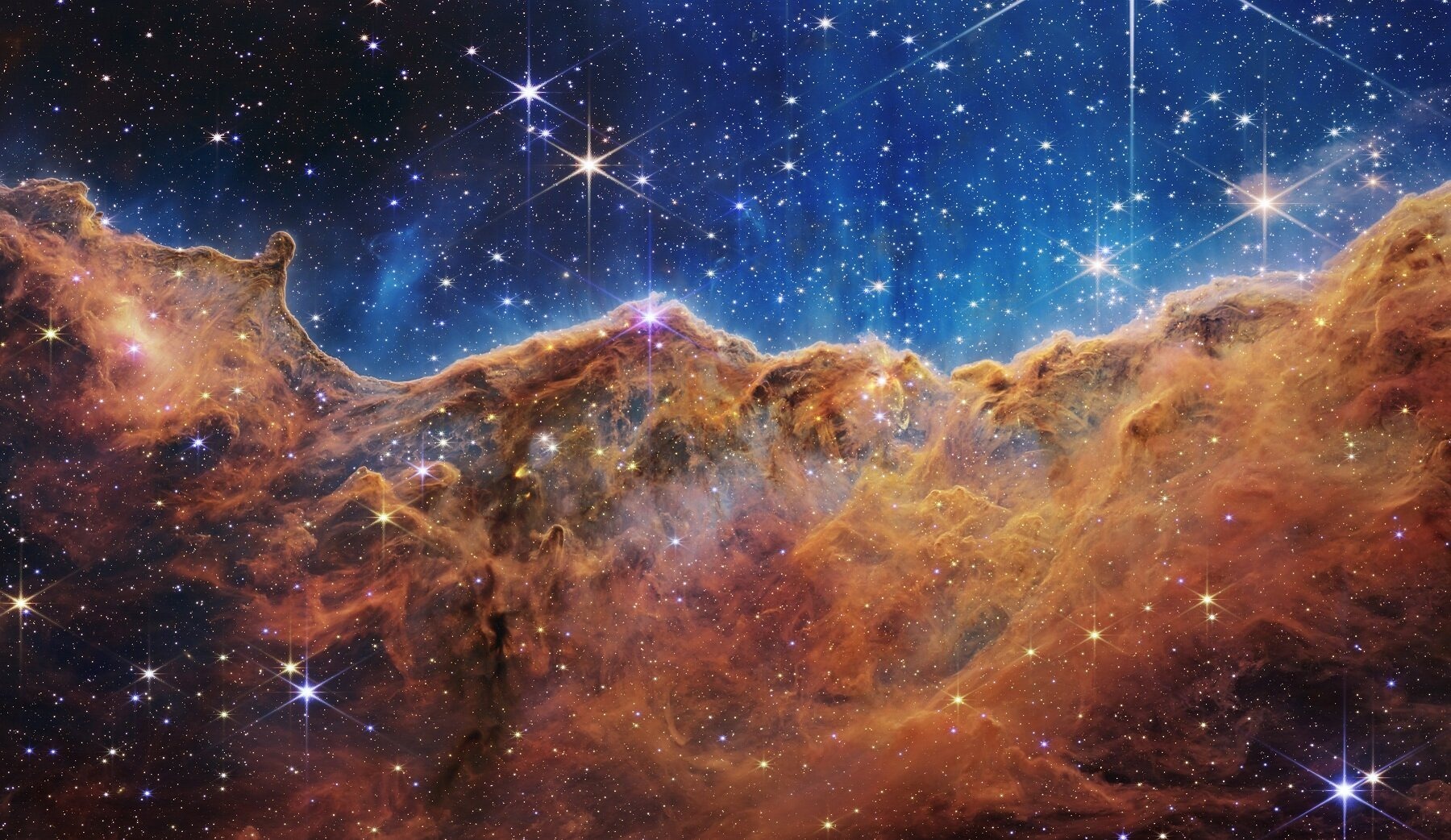The first images from the James Webb Space Telescope have been released, and they are amazing, revealing galaxies right on the edge of space and time. It has been described as mountains and valleys, however, these mountains would be in the order of 7 light years high (4.1x1013 miles).
“Called the Cosmic Cliffs, the region is actually the edge of a gigantic, gaseous cavity within NGC 3324, roughly 7,600 light-years away. The cavernous area has been carved from the nebula by the intense ultraviolet radiation and stellar winds from extremely massive, hot, young stars located in the center of the bubble, above the area shown in this image. The high-energy radiation from these stars is sculpting the nebula’s wall by slowly eroding it away.”
One thing to note, the stars that look really bright and spikey are just closer to us, right on the edge of our own milky way galaxy, and we are seeing artifacts of the telescope hardware called diffraction spikes.
I have edited the image for my site to a reasonable size, but you can download the more detailed 124MB full resolution image (14575 x 8441) here.
The more I see this and try to imagine the scale, even compared to our entire planet, or even our solar systems, it reminds of Psalms 8:
3 When I consider thy heavens, the work of thy fingers, the moon and the stars, which thou hast ordained; 4 What is man, that thou art mindful of him? and the son of man, that thou visitest him?


Comments are closed.